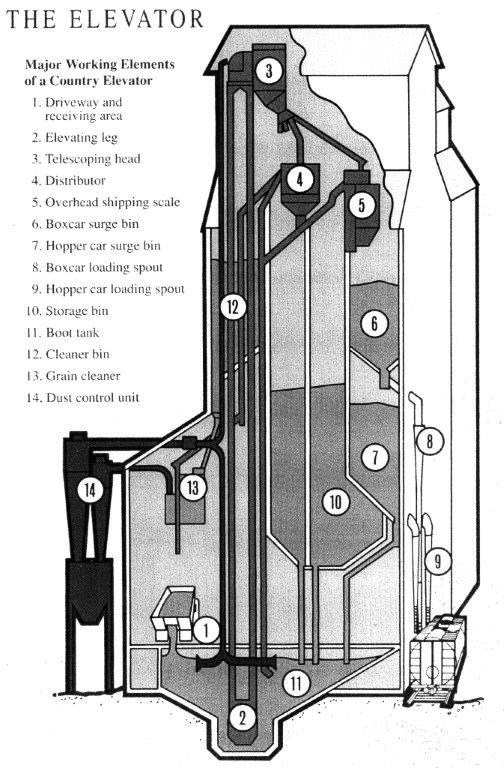From Saskatchewan Wheat Pool records:
1. Driveway & receiving area 2. Elevating leg 3. Telescoping head 4. Distributor 5. Overhead shipping scale 6. Boxcar surge bin 7. Hopper car surge bin 8. Boxcar loading spout 9. Hopper car loading spout 10. Storage bin 11. Boot tank 12. Cleaner bin 13. Grain cleaner 14. Dust Control Unit. -- Yorkton was the end of the railway for nearly four years before the Canadian Pacific Railway extended the line to Sheho in 1903. In the late 1890s there were no grain elevators and the first loading of grain was done directly to box cars from the ground level. A small warehouse was built but it was a cumbersome means of handling and loading grain. By 1901, one elevator had been erected. In January of 1902, several business canvassed for capital and a second elevator was built. By 1904, there was the Dominion Elevator Co., the Imperial, the Northern, Stead & Herriott, and by 1905, the Canadian Elevator Co. The Peaker Brothers, Charles and James formed a partnership in the grain business in 1907. By 1911, companies represented in Yorkton were: N. Bawlf & Company, the Canadian Elevator, the Dominion Elevator, the Imperial Elevator, Northern Elevator, and Peaker Bros., plus Levi Beck’s and Frank W. Bull’s private enterprises.
Contact Terri Lefebvre Prince,
Heritage Researcher,
City of Yorkton Archives,
Box 400, 37 Third Avenue North
Yorkton, Sask. S3N 2W3
306-786-1722
heritage@yorkton.ca



